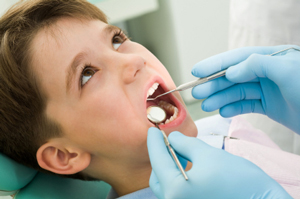July 2, 2012
Bringing Better Dental Care To Lower-Income Communities

By Michael D. Shaw
It was Jesus of Nazareth, echoing Deuteronomy, who told us that “The poor you will always have with you.” (Matthew 26:11) Although public assistance programs date back as far as ancient Greece and Rome, for the most part, charity had long been confined to private—generally religious-based—organizations. Germany’s Health Insurance of Workers Law of 1883, pushed by Otto Von Bismarck, is regarded as the first instance of a national government entering the social welfare business.
By the 1930s, the majority of industrialized countries had instituted some sort of welfare program. As part of the Social Security Amendments of 1965, both Medicare and Medicaid were created in the United States. Medicaid—jointly funded by the states and the Feds—addresses health-related services for low income individuals. Sadly, poor people tend to have worse health outcomes, and so far, government programs in the US have not exactly reversed this trend.
Deficiencies in dental care for the poor, or the “Great Dental Divide” as it was called in a September, 2011 article in The Atlantic Cities, has become a key topic for decision makers. The tragic case of 12-year-old Deamonte Driver, who died in 2007 because an untreated abscessed tooth eventually led to a fatal brain infection, inspired a guaranteed dental benefit in the Children’s Health Insurance Program (CHIP) portion of Medicaid.
Ironically, for want of an $80 tooth extraction, the boy perished, but not before more than $250,000 was spent in a futile attempt to save him. If you seek a prime example of how our health care system spends untold dollars to deliver rotten outcomes, look no further.
Tooth decay is the single most common chronic disease of childhood in our country. Nationally, an estimated one in three children enrolled in Medicaid has untreated tooth decay (dental caries), and one in nine has untreated tooth decay in three or more teeth. Children enrolled in Medicaid are almost twice as likely to have untreated tooth decay as children with private insurance.
Problems associated with dental caries include:
- Pain
- Loss of teeth
- Malocclusion (opposing teeth lining up improperly)
- Poor eating and retarded growth
- Poor school performance and attendance
- Low self-esteem
- Poor language development
While in theory Medicaid does offer dental benefits, only about one-third of dentists accept Medicaid patients. It’s not difficult to understand why. Beyond the abysmally low reimbursements, dentists cite other issues such as frequently broken appointments, unappreciative patients, stifling red tape, and an often hostile bureaucracy to deal with. Fortunately, Dental Management Service Organizations have emerged to meet the challenge of providing dental care to the nation’s poor.
These practices and dentists are going where the other dentists can’t or won’t: Inner cities, rural America, and low-income neighborhoods.
DMSOs are individual practices, often part of a chain, that are managed by a corporation. As such, certain efficiencies in operation can be realized, allowing Medicaid-reimbursed dentistry to become a viable business model. In addition, DMSOs permit dentists to leave the administrative functions to others, and focus on what they do best…dentistry.
Not surprisingly, DMSOs have their detractors. Dental associations are wary of the competition, and are trying to block the expansion of DMSOs. Their answer to the Great Dental Divide is—you guessed it—to just increase the Medicaid reimbursements. Since the very population served by DMSOs includes patients with serious dental problems to begin with, plaintiff’s attorneys smell blood, and are trolling for clients.
The muckraking media has gotten into the act, as well. The PBS series Frontline recently broadcast an episode entitled “Dollars and Dentists.” While the program did rightly call attention to the Great Dental Divide, it spent far too much time attacking two major DMSOs, relying mostly on the testimony of disaffected former employees, not missing a single opportunity to go after the profit motive and evil corporations (presumably like the ones that donate to PBS).
At the same time, the show heralded the supposed success of a non-profit dental corporation, which, we are now told, will be switching to a for-profit model. Moreover, the heartwarming story of a relatively young toothless woman receiving her charity dentures played out against a backdrop of thousands of others like her, who were not able to get the care they needed.
Joining with Frontline in the investigation was the inaptly-named Center for Public Integrity. In its desperate quest to raise funds by heavily featuring this story on its website, the organization must have data mined to the max to find the negative cases it portrayed. In fact, the DMSO maligned in its report served more than 760,000 patients last year, and registers complaints from fewer than one-tenth of one percent of those treated.
DMSOs represent the best method of bringing Medicaid dentistry to the nation’s poor. Regulatory authorities in the states and federal government can weed out the few bad actors in the industry without destroying the model that is generally working for poor families. Let’s end the Great Dental Divide!

